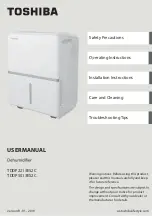
9
1.6 Laying the steam hose
The steam hose should be kept as short as possible. It should not be possible to block or obstruct the steam supply lines
in any way. Furthermore, they must be protected from outside interference (e.g. deformities, kinking etc.). After
the hose has been laid, it is advisable to re-check everything when the hose is warm. It is equally important to avoid
condensation pockets in the hose. Any curves should have as large a radius as possible.
Installation material
If a hose is used for the steam line, it must be the original one supplied by NORDMANN. If other hoses are utilised,
NORDMANN cannot be held responsible for any damage that may occur. A hose clamp should be used to link the hose
to the steam-distribution pipe.
When laying the steam hose in pipes, cable ducts etc., you must verify their resistance to high temperature (min. 100 ºC).
All insulation material must also be checked for its resistance to high temperature.
If the steam line installed is of copper, small radii should be avoided wherever possible. Every bend causes an additional
resistance. A steam line of copper must have the same diameter as the hose.
If the steam lines are long with a lot of bends and a relatively high internal duct pressure, water may be continuously
forced out of the steam cylinder, which impairs performance.
Correctly installed
300
min 20%
Fig. 26
300
300
5%
Fig. 27
Fig. 28
Fig. 29
Possible
Wrongly installed
Possible
300










































